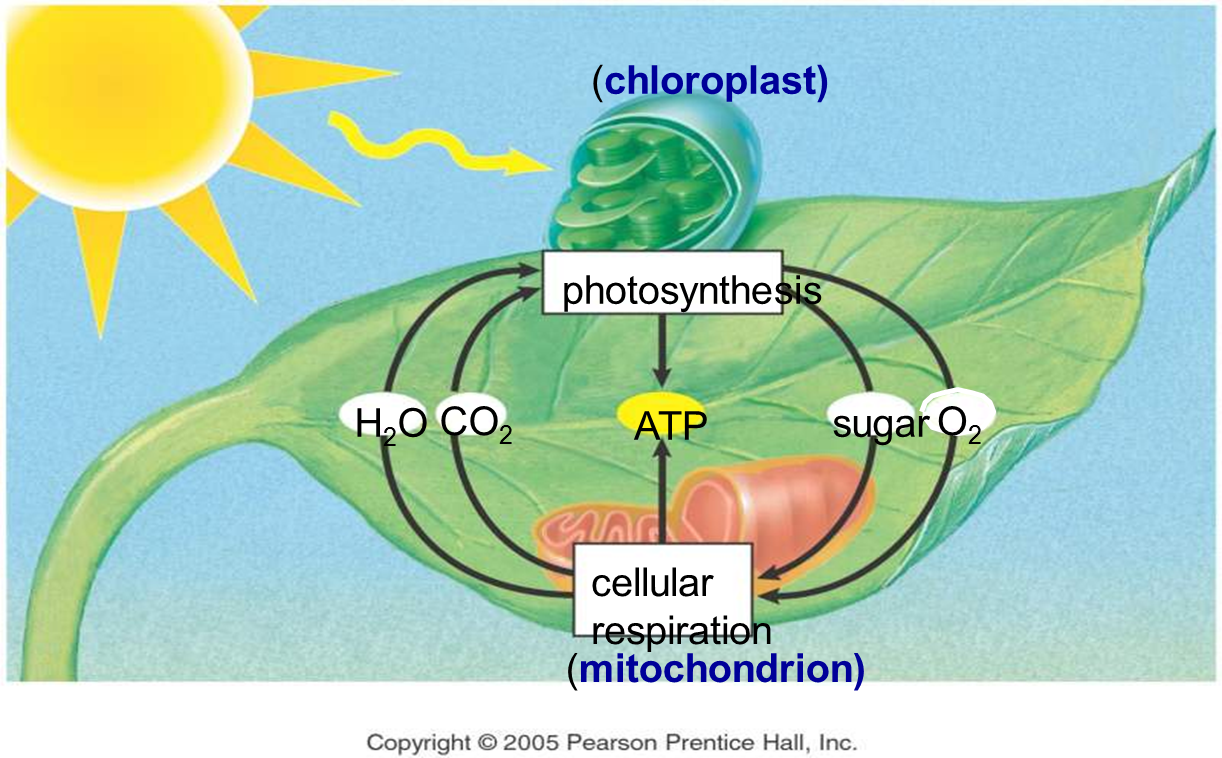
Week 7: Photosynthesis
Plants are called autotrophs because they can use energy from light to synthesize, or make, their own food source. Many people believe they are “feeding” a plant when they put it in soil, water it, or place it outside in the Sun, but none of these things are considered food. Rather, plants use sunlight, water, and the gases in the air to make glucose, which is a form of sugar that plants need to survive. This process is called photosynthesis and is performed by all plants, algae, and even some microorganisms. To perform photosynthesis, plants need three things: carbon dioxide, water, and sunlight. The energy from light causes a chemical reaction that breaks down the molecules of carbon dioxide and water and reorganizes them to make the sugar (glucose) and oxygen gas. After the sugar is produced, it is then broken down by the mitochondria into energy that can be used for growth and repair. The oxygen that is produced is released from the same tiny holes through which the carbon dioxide entered. Even the oxygen that is released serves another purpose. Other organisms, such as animals, use oxygen to aid in their survival.
Reference:
- Master Success Text Book Botany D by Dr. Riaz-ul-Haq Ramay
- Cell Biology; Cytology, Bimolecules & Molecular Biology by P S VERMA, V K AGRWAL & S CHAND


